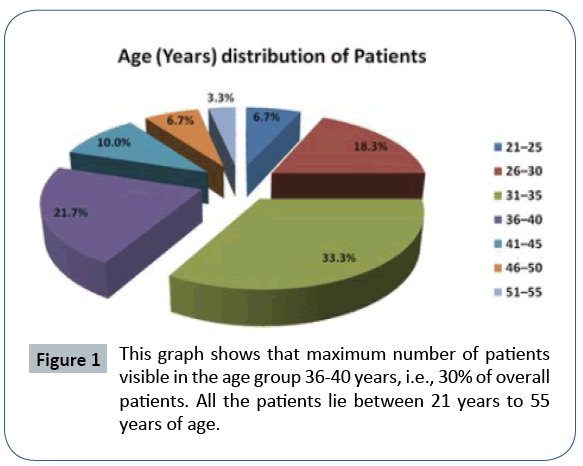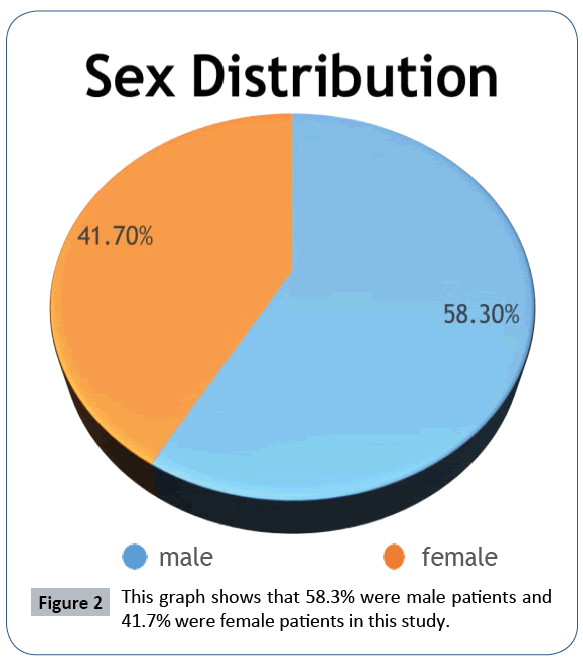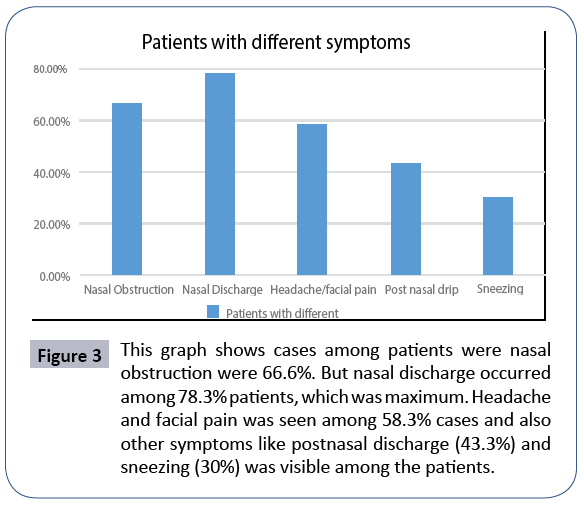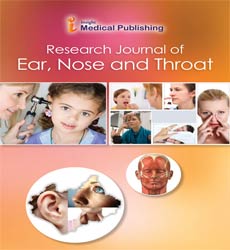Diagnostic Nasal Endoscopy or CT Scan of Paranasal Sinuses: Which One First?
Pooja Sancheti*, Haritosh K Velankar, Yessu Krishna Setty, Merin Sara Mathew and Yogesh G Dabholkar
Salt Lake City, Sector 1, Kolkata, West Bengal, India
- Corresponding Author:
- Dr. Pooja Sancheti
AD 314, Salt Lake City
Sector 1, Kolkata 700064, West Bengal, India
Tel: +00919167640766
E-mail: drpoojasancheti@hotmail.com
Received date: October 24, 2017; Accepted date: October 27, 2017; Published date: November 03, 2017
Citation: Sancheti P, Velankar HK, Setty YK, Mathew MS, Dabholkar YG (2017) Diagnostic Nasal Endoscopy or CT Scan of Paranasal Sinuses: Which One First? Res J Ear Nose Throat Vol.1 No.1:7
Abstract
Keywords
DNE; CT scan; CRS
Introduction
Microorganisms play a very significant role in the persistence and origination of this inflammatory process, although the exact role of the organisms in the pathogenesis of Chronic Rhino Sinusitis (CRS) is unclear [1]. According to the diagnostic guidelines by the Rhinosinusitis Task Force of the American Academy of Otolaryngology, Head and Neck Surgery (AAO-HNS) and revised by the Sinus and Allergy Health Partnership (SAHP), chronic rhinosinusitis is diagnosed by clinical symptoms and signs which are divided into minor and major criteria [2,3]. The major symptoms of Chronic Sino nasal diseases according to Task Force Criteria include facial pressure or pain, nasal obstruction, nasal discharge or purulence on examination, fever and hyposmia or anosmia. The minor symptoms include headache, halitosis, fatigue and dental pain.
The bacterial biofilms probably play a significant role in the disease process. It is a common condition in medical practice, which affects many people worldwide and its prevalence is increasing day by day [4,5].
With the increased use of endoscopy for the evaluation and surgical treatment of paranasal sinus diseases, attention is directed towards the analysis of the lateral nasal wall and paranasal sinus anatomy. By direct endocavitary observation, identification and evacuation of possible secretions, it enables the anatomical and functional state of the mucosa to be evaluated, as well as that of the ostial region. Nasal Endoscopy can often act as the primary therapeutic gesture.
Computerized Tomography (CT) provides essential preoperative information for the assessment of patients undergoing functional endoscopic sinus surgery (FESS). CT scan of the paranasal sinuses is aimed at delineating the extent of the disease; define any anatomical variants and relationship of the sinuses with the surrounding important structures. At present, CT scan is the most used imaging technique for assessing chronic sinusitis and defining the anatomical abnormality.
Hence, endoscopy and computerized tomography (CT) have revolutionized the understanding and management of chronic sinusitis in recent times. Recently, combination of diagnostic nasal endoscopy and systematic understanding of the lateral nasal wall with CT in the coronal plane has become the corner stone in the evaluation of the paranasal sinus disease. This is the basis for the concept of FESS. In this study, we have compared the diagnostic nasal endoscopic findings and CT findings of the patients with para nasal sinus diseases and elaborated the importance of both.
Materials and Methods
The aim and objective of the study is to determine the role of DNE and CT scan of PNS. It focusses on the utility of both.
All the patients attending the ENT outpatient department of our tertiary care center clinically diagnosed as Chronic Rhinosinusitis as defined by the American Academy of Otolaryngology and Head and Neck surgery, which describes typical symptoms persisting for 12 weeks or more. Along with previously failed medical management for their CRS, including topical nasal steroids, systemic decongestant and extended courses of antibiotics and who were willing to undergo endoscopic sinus surgery.
60 patients were assessed. Patients with acute sinusitis, below 10 years of age, pregnant, or patients already operated for Sino nasal diseases, patients with complications of CRS were excluded. Patients with evidence of sinusitis of dental origin or previous history of facial trauma or sinonasal malignancy confirmed with histopathology were also excluded.
1) The cases selected for the study were subjected to detailed history taking and examination.
2) A routine haemogram and urine examination (albumin, sugar, microscopy), swab from middle meatus for culture sensitivity were done for the patients. HIV, HBsAg & HCV were carried out routinely in each patient.
3) All the patients in active stage of the disease were treated with course of suitable antibiotic according to the culture report, systemic antihistamines and local decongestants. They were also treated for the medical conditions like diabetes mellitus, hypertension, and nasal allergy. No patient received systemic steroid therapy or immunotherapy.
4) Each patient underwent a systematic diagnostic nasal endoscopy and computed tomography of nose and paranasal sinuses after the active stage of the disease was treated.
Results
1. Majority of the patients had septal deviation either an anterior or posterior deviation but majority of the cases is asymptomatic for the deviation. CT scan is having a better diagnostic value for Deviated nasal septum than DE mainly in cases of gross anterior DNS and extensive nasal mass occupying lesion.
2. Superior attachment of uncinate process can be appreciated both in CT scan and DE. But DE being a blind procedure to assess the attachments to lamina papyaracea and skull base, thus CT scan gives a much better visualization of its attachments.
3. Middle meatal secretions which are one of the diagnostic criteria for Chronic Rhinosinusitis which is seen only in DE and not by CT scan thereby indicating DE has to be done in all cases of Chronic Rhinosinusitis.
4. Frontal recess can be evaluated better by CT than DE.
5. Aggernasi cells are well assessed by CT scan but only over pneumatised aggernasi cells are appreciated on DE. Thereby indication CT scan has a better diagnostic value in viewing for aggernasi cells.
6. Haller cells could only be appreciated by CT scan. Thereby indicating DE has no diagnostic value at all for evaluating Haller cells.
7. Middle turbinate variations like concha bullosa and paradoxical were better seen on CT scan than DE.
8. Hypertrophy of the middle and inferior turbinate both could be visualized and analyzed by CT scan as well as DE but DE has a better diagnostic value than CT scan because it shows the mucosal changes. Thereby giving a better insight to the disease process and the present condition of the pathology.
9. Polyps of the nasal cavity as well as the paranasal sinus. It can be visualized both on CT scan as well as DE but DE gives a better understanding of the condition of polyp.
10. To know the extent and spread of the disease CT scan gives a better understanding than DE.
11. Sinus haziness could only be seen with CT scan thereby knowing the extent of the disease and plan for better management of the disease.
Discussion
Acute RS is defined by RI guidelines as symptom duration of 4 weeks or less. It also designates CRS as symptoms lasting for 12 weeks or longer [6].
Age distribution
As mentioned in Figure 1, in the present study age of patients varies between 21 and 55 years, with the maximum number of patients in 36-40 years age group (30%).
In study conducted by Sheetal et al. [7], 45 patients the majority of patients are in the age group of 20 to 40 years.
By above studies we understand this age group is predominant because they are more exposed to the environment, recurrent upper respiratory tract infections, irregular check-ups and treatment.
The study conducted by Zojaji et al. [8] of 51 patients, the mean age of the patients is 33 years and in study conducted by Rafael Jose Geminiani et al. [9] in 35 patients the mean age turned out to be 40.
Upon comparing to the above studies, the mean age group in the present study is 36.4 years, which is almost equal.
Sex distribution
In the present study of 60 patients according to Figure 2, 35 cases are male while 25 cases are females which accounts for 58.3% being male and 41.7% being female.
In the study conducted by Sheetal et al. [7], the majority of the patients are male 62% and 38% are female.
The study conducted by Geminiani et al. [9], the maximum number of patients is male 18 (51.5%) as compared to female 17 (48.5%).
The study of Zojaji et al. [8], there are 35 male (69%) and 16 female (31%).
All of the studies including the present study have a male predominance than female.
Clinical features
Symptoms: Nasal discharge is the commonest symptom which is present in 47 (78.3%) cases. The next frequently occurring complaint is nasal obstruction present in 40 (66.6%) cases. The other symptoms are postnasal discharge 26 (43.3%), sneezing 18 (30%) (Figure 3).
Figure 3: This graph shows cases among patients were nasal obstruction were 66.6%. But nasal discharge occurred among 78.3% patients, which was maximum. Headache and facial pain was seen among 58.3% cases and also other symptoms like postnasal discharge (43.3%) and sneezing (30%) was visible among the patients.
In majority of the cases the duration of symptoms is more than 12 weeks and is not responding to medical line of management.
In the study conducted by Sheetal et al., the commonest complaints are headache in 90% followed by nasal discharge in 80%. The other complaints such as sneezing are seen in 9% of the patients. The average duration of symptoms varies from 1-5 years [7].
In the study conducted by Zojaji et al., nasal obstruction is the most common symptom with 51 patients and headache is noted in 37 (72.5%) patients and nasal discharge in 46 (90.1%) patients and other related complaints such as hyposmia is seen in 15 cases, cough in 11 and asthma in 6 cases. The signs and symptoms ranged from 12 weeks to many years [8].
The results of the present study are comparable with all of these studies showing a chronic rhino sinusitis.
Signs: In the present study by anterior rhinoscopic examination the commonest clinical sign, seen is purulent middle metal discharge 42 (70%) patients. Next most common sign is followed by deviated nasal septum seen in 28 (46.7%) and hypertrophied inferior turbinate in 25 (41.7%) of patients.
Other signs like congested mucosa in 20 (33.3%), pale mucosa in 16 (26.6%) and oedematous nasal mucosa in 11 (18.3%). Normal mucosa is seen in 13 (21.6%) of the patients.
In the study conducted by Venkatchalam et al., the findings are hypertrophied inferior turbinate (10%), hypertrophied middle turbinate (17.14%), congested mucous membrane (15.71%), sinus tenderness (7.14%) and ethmoidal polyps (12.8%) [10].
In the present study all the signs are present in more significant percentage of our patients compared to Venkatchalam’s study [10].
Conclusion
Prolonged duration of RS symptoms (more than 8-12 weeks) is the primary reason to evaluate a patient for CRS [11] and making the choice between CT PNS or DNE is patient and disease dependent. Understanding the advantages and disadvantages of each helps us realize that they are of synergistic in nature and not competitive.
References
- Lanza DC (2014) Diagnosis of chronic rhinosinusitis. Ann OtolRhinol Laryngol 193: 10-14.
- Lanza DC, Kennedy DW (1997) Adult rhinosinusitis defined. Otolaryngol Head Neck Surg 117: 1-7.
- Benninger MS, Ferguson BJ, Hadley JA (2003) Adult chronic rhinosinusitis: Definitions, diagnosis, epidemiology and pathophysiology. Otolaryngol Head Neck Surg 129: 1-32.
- Duarte AF, SolerRde C, Zavarezzi F (2005) Nasal endoscopy associated with paranasal sinus computerized tomography scan in the diagnosis of chronic nasal obstruction. Rev Bras Otorhinolaringol (Engl Ed) 71: 361-363.
- Jones NS (2002) CT of the paranasal sinuses: A review of the correlation with clinical, surgical and histopathological findings. Clin Otolaryngol Allied Sci 27: 11-17.
- Meltzer EO, Hamilos DL, Hadley JA; American Academy of Allergy, Asthma and Immunology (AAAAI); The American Academy of Otolaryngic Allergy (AAOA); et al. (2004)Rhinosinusitis: establishing definitions for clinical research and patient care. J Allergy Clin Immunol 114: 155-212.
- Sheetal D, Devan PP, Manjunath P, Martin P, Satish Kumar K, et al. (2011) CT pns - Do we really require before fess? J Clin Diagn Res 5: 179-181.
- Zojaji R, Mirzadeh M, Naghibi S (2008) Comparative evaluation of preoperative CT scan and intraoperative endoscopic sinus surgery findings in patients with chronic rhinosinusitis. Iran J Radiol 5: 77-82.
- Rafael JG, Rodrigo FV, Adriano BM, Henrique PDC, João JDS, et al. (2007) Comparison between computed tomography scan and nasal endoscopy in diagnosis of chronic rhinosinusitis. Intl Arch Otorhinolaryngol 11: 402-405.
- Venkatachalam VP, Bhat A (2000) Functional endoscopic sinus surgery - A new surgical concept in the management of chronic sinusitis. Indian J Otolaryngol Head Neck Surg 52: 3-16.
- Rosenfeld RM, Andes D, Bhattacharyya N, Cheung D, Eisenberg S, et al. (2007) Clinical practice guideline: Adult sinusitis. Otolaryngol Head Neck Surg 137: 1-31.
Open Access Journals
- Aquaculture & Veterinary Science
- Chemistry & Chemical Sciences
- Clinical Sciences
- Engineering
- General Science
- Genetics & Molecular Biology
- Health Care & Nursing
- Immunology & Microbiology
- Materials Science
- Mathematics & Physics
- Medical Sciences
- Neurology & Psychiatry
- Oncology & Cancer Science
- Pharmaceutical Sciences



